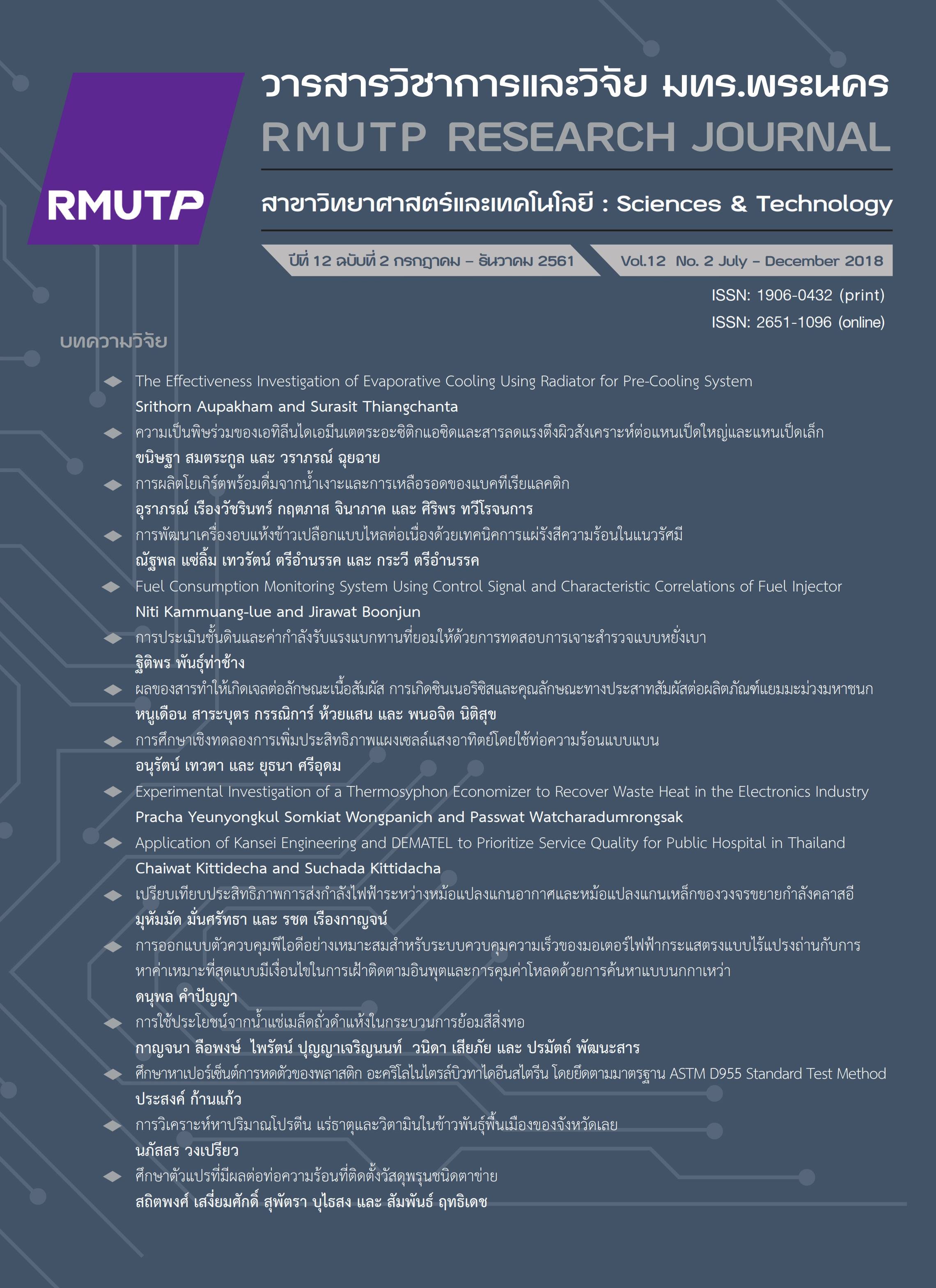Determination of Protein Mineral and Vitamin in local rice varieties from Loei province
Main Article Content
Abstract
The aim of this research was to study protein mineral and vitamin contents in 19 local rice varieties 36 samples collected from Loei province. Determination of Nutritional value of 36 samples showed that it consisted of 7.16±0.15-11.05±0.12 g/100g protein. Khao Niaw Dum Luempua (LR22) showed the highest phosphorus content were 263.85±0.19 mg/100 g. Analysis the amount of iron and calcium by flame atomic absorption spectrophotometry (FAAS). Found that the concentration of iron was the highest content in Khao Homtung (LR7) were 7.31±0.14 mg/100 g, And calcium content highest in Khao Niaw Dum Luempua (LR22) as 11.15±0.24 mg/100 g. In the analysis of all three vitamins by high performance liquid chromatography (HPLC). Khao Sum Bine (LR14) showed the highest beta carotene content were 0.08±0.14 mg/kg. While not detecting beta carotene in local rice varieties 15 samples including Khao Plah Sew Noi (LR3) Khao Hom Sa Ngiem (LR6) Khao Homtung (LR7) Khao San Pa Tong (LR12) Khao San Pa Tongdor (LR13) Khao Soviet (LR15) Khao San Ti Bal (LR16) Khao Lom Pee (LR17) Khao Laotaek (LR19) Khao Plah Sew Noi (LR20) Khao Hom Sa Ngiem (LR27) Khao Homtung (LR28) Khao Phare (LR30) Khao Maw (LR31) Khao Dang (LR32) and Khao Plah Sew Noi (LR35). The results showed that the highest alpha tocopherol and thiamine contents were found in Khao Niaw Dum Luempua (LR36) were 16.18±0.09 and 12.08±0.18 mg/kg respectively. The results of this study are useful as basic data for consumption of rice, Supporting cultivation and preserving local rice. Moreover further product development.
Article Details
References
[2] P. Rujirapisit. et al., “Nutritional Value of 9 Rice Cultivars” Agricultural Science Journal, vol. 43, no. 2, pp. 173-176, 2012.
[3] Horwitz W, Official Method of Analysis of AOAC International, 17th ed, AOAC International, Maryland, USA. 2000.
[4] AOAC, Official Method of Analysis of AOAC International. 17th ed. AOAC International
Inc., Gaithersberg, MD. USA .Official Method 958.01, 2000.
[5] AOAC, Determination of Lead, Cadmium, Copper, Iron and Zinc in food Atomic Absorption Spectrophotometry after dry ashing, 17th ed, Official methods, 999.11, 2000.
[6] A.J. Speek, et al., “Determination of beta- carotene content and vitamin A activety of vegetables by high-performance liquid chromatography and spectrophotometry,” Food chem, vol. 19 pp. 65-74, 1985.
[7] F. Sancho, et al., “Effect of ultra-hight hydrostatic pressure on hydrosoluble vitamins,” Journal of Food Engineering, vol. 39, pp. 247-253,1998.
[8] C. Chaowaneeporn, et al., “Chemical Composition and Amylose Content in Local Rice Variety of Phatthalung Province,” M.S. thesis, Chemistry program, Faculty of Science and Technologry, Songkhla Rajabhat Univ., Songkhla., Thailand, 2015.
[9] Y. Huang, et al., “Variation in mineral elements in grains of 20 brown rice accessions in two environments,” Food Chemistry, vol. 192, pp. 873 - 878. 2015.
[10] M. Amparo Asensi-Fabado and Sergi Munne´-Bosch, “Vitamins in plants: occurrence, biosynthesis and antioxidant function,” Trends in Plant Science, vol.15 No.10, pp.582-592. 2010.

